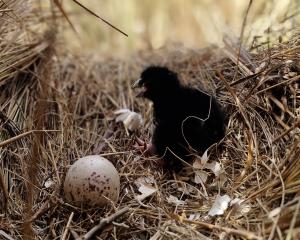
Yesterday, the Otago Daily Times reported cyanobacteria scums, or blue-green algae, had been found in Lake Hayes over the weekend and testing showed levels were much higher than the government guidelines for safe recreational use.
However, in a post on social media on Tuesday night, Remarkable Vets advised dog owners to exercise care, and said they were treating an animal for suspected exposure to the algae, possibly from the Arrow River.
A spokeswoman for the vets declined to comment when contacted yesterday, on the basis of client confidentiality.
However, the social media post said if dogs showed signs of weakness, collapse, vomiting, diarrhoea, respiratory or neurological problems, owners should contact a vet immediately.
Symptoms could occur within 30 minutes of exposure and up to 24 hours after.
ORC environmental resource scientist Rachel Ozanne said the river was checked yesterday for signs of the toxic algae phormidium.
''If algae is confirmed, then signs will be put up,'' Ms Ozanne said.
Meanwhile, the ORC would carry out more testing in Lake Hayes on Monday after results from tests this week showed the biovolume of cyanobacteria was 3.96mm3 per litre.
Under Government water quality guidelines for recreational swimming areas, those with less than 0.5mm3 per litre should be safe.
Water with more than 1.8mm3 per litre posed a health risk.
Ms Ozanne said further sampling at Lake Hayes would be completed on Monday and tests from that would be available on Wednesday next week.
''ORC will be monitoring the lake on a weekly basis to track the concentration of algae.
''The signs will be taken down when there have been two consecutive weeks of low cyanobacteria levels.
''The two week stand-off period is necessary because toxins can persist in the water after the algal bloom has dissipated.''
The last known bloom in Lake Hayes was in 1981.
Its occurrence this year was attributed to the long, hot, dry summer.
Exposure to cyanobacteria may cause skin rashes, nausea, tummy upset, and tingling and numbness around the mouth or tips of fingers.












